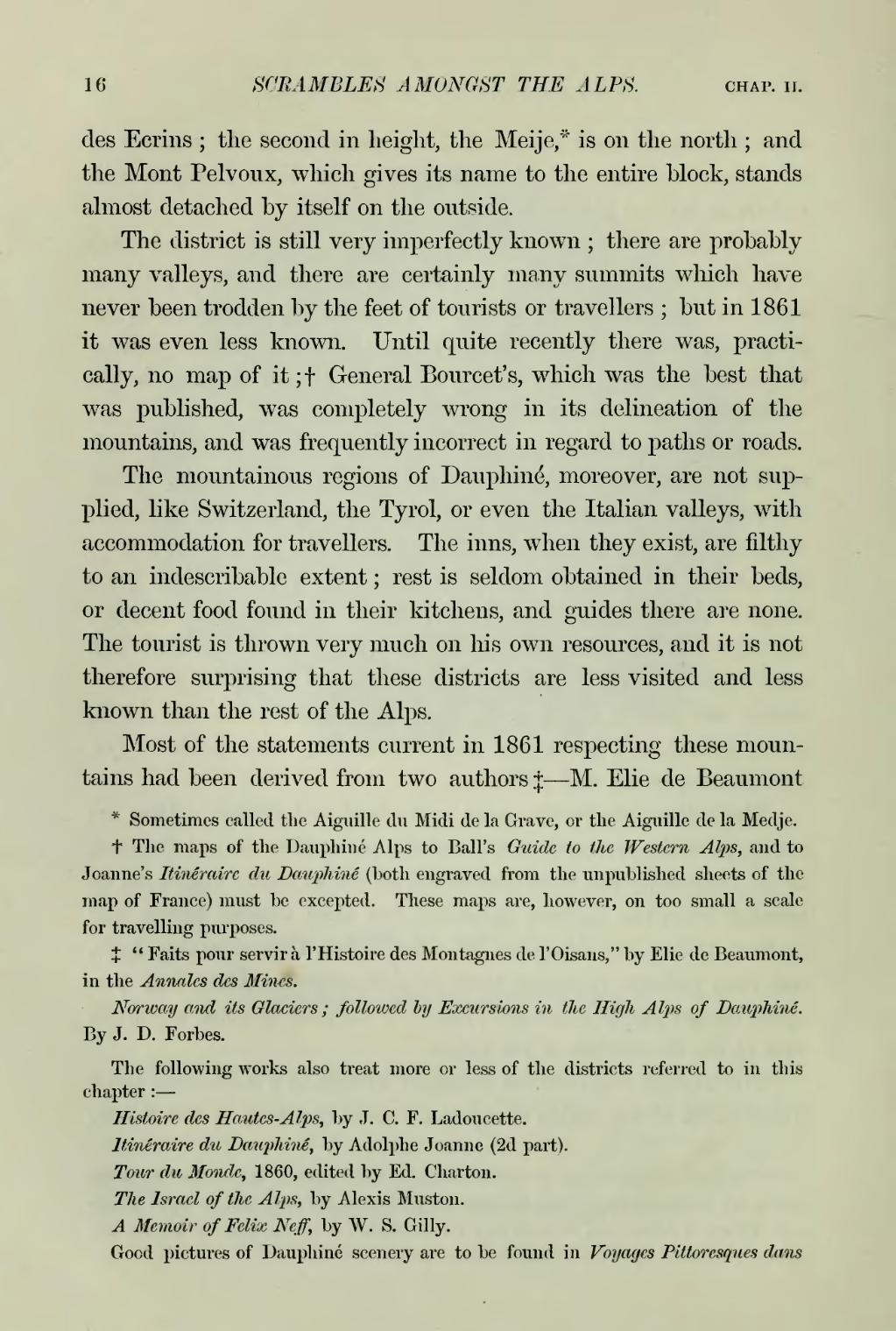des Ecrins; the second in height, the Meije,[1] is on the north; and the Mont Pelvoux, which gives its name to the entire block, stands almost detached by itself on the outside.
The district is still very imperfectly known; there are probably many valleys, and there are certainly many summits which have never been trodden by the feet of tourists or travellers; but in 1861 it was even less known. Until quite recently there was, practically, no map of it;[2] General Bourcet's, which was the best that was published, was completely wrong in its delineation of the mountains, and was frequently incorrect in regard to paths or roads.
The mountainous regions of Dauphiné, moreover, are not supplied, like Switzerland, the Tyrol, or even the Italian valleys, with accommodation for travellers. The inns, when they exist, are filthy to an indescribable extent; rest is seldom obtained in their beds, or decent food found in their kitchens, and guides there are none. The tourist is thrown very much on his own resources, and it is not therefore surprising that these districts are less visited and less known than the rest of the Alps.
Most of the statements current in 1861 respecting these mountains had been derived from two authors[3]—M. Elie de Beaumont
- ↑ Sometimes called the Aiguille du Midi de la Grave, or the Aiguille de la Meije.
- ↑ The maps of the Dauphiné Alps to Ball's Guide to the Western Alps, and to Joanne's Itinéraire du Dauphiné (both engraved from the unpublished sheets of the map of France) must be excepted. These maps are, however, on too small a scale for travelling purposes.
- ↑ "Faits pour servir à l'Histoire des Montagnes de l'Oisans," by Elie de Beaumont, in the Annales des Mines.
Norway and its Glaciers; followed by Excursions in the High Alps of Dauphiné.
By J. D. Forbes.
The following works also treat more or less of the districts referred to in this chapter:—
Histoire des Hautes-Alps, by J. C. F. Ladoucette.
Itinéraire du Dauphiné, by Adolphe Joanne (2d part).
Tour du Monde, 1860, edited by Ed. Charton.
The Israel of the Alps, by Alexis Muston.
A Memoir of Felix Neff, by W. S. Gilly.
Good pictures of Dauphiné scenery are to be found in Voyages Pittoresques dans

